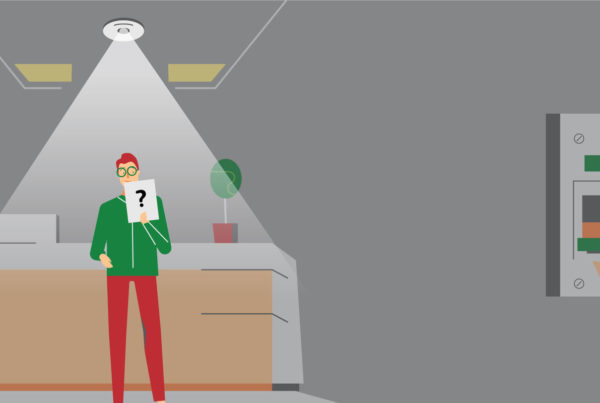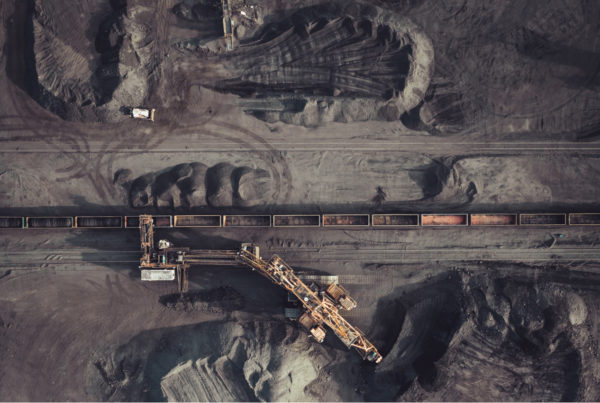Can you imagine a time when your building will have a brain? This innovation can help reduce your energy consumption, regulate smoke detection, prevent fire outbreaks, and monitor security amongst other tasks. Although the idea sounds somewhat far-fetched and not entirely possible, many people agree that Smart Building Technology can help with various issues related to the strata industry.
Since the approval of the first strata titled building (the Lindsay Gardens in 1961), various complexes of this sort have sprung up all over Australia. The growth of this industry which according to a report has an insured value of $955 billion has a backlog of issues [1]. These issues include deteriorated infrastructure, complications with maintenance and a need for relevant support services.
However, according to a Siemens report, 83% of Australian real estate experts believed IoT could help provide smart buildings that make the management of a building less demanding [2]. These statistics show that this technology can bring needed assistance to an industry that affects the country’s housing system.
Do you wish to know more about Smart building with the aid of the Internet of things and its possible applications to the Strata industry? Well, read this article and discover a whole new way of making management of lots a fantastic experience.
What is smart building Technology?
A clear explanation to smart building could be stated as a string of technological communication which helps to control, automate, manage, interact, and connects different devices, functions and sensors within a building in an easier way.
Obviously, with the aid of technology, it is easier for different individual subsystems to connect with each other and run efficiently. In smart building technology, this enables easy control of the building appliances including lighting, security and HVAC and other systems.
The concept of smart building has a broad range linking to various household operations within the structure from the movement of the elevator or opening of doors and window to the control of automotive electronics. However, the two main categories that make up the energy efficiency of the building include a smart HVAC system and smart lighting.
Smart HVAC system: are connected to different types of sensor that can detect and automatically adjust to the changes in weather, deficiency in a system, and movement of occupants within the building.
Smart lighting: it regulates the light level to suit different changes in light condition at a given period. It also responds in accordance to other building operation including the HVAC system (heating, ventilation, Air conditioning), and smart window [3].
Smart Building Application Promoted By Efficiency
Smart building technology could spring up effectively in regards to combining regulatory innovation towards the initial operation of facilities, applications, and services. Of course, numerous technological innovations may have little similarities and can be applied in the building sector; combining these technologies will help promote the conventional limits of each market [4].
The General Benefits of Smart Building Technology
- Occupant comfort: this technological innovation offers excellent comfort, productivity, and convenience. This is carried out to make life easier for the inhabitants as it helps to monitor every activity of the building including the changes in air quality, humidity, or temperature.
- Energy efficiency: at the first stage, the implementation of the technological innovation will help to manage and lower the energy consumption within the building facilities. The primary goal is to communicate and interact automatically with the HVAC system, light appliances, and other electrical devices. Furthermore, it helps to disclose the energy loss of unused spaces as it is connected to the occupancy indicator.
- Safety and security efficiency: initially, this was the primary purpose that sprang up the use of smarts building technology. There is a stronger innovation springing up for the aim to ensure certified personnel to detect any uneven movement within the building and at stronger cases signal the Emergency Centre. It also gives warning in case of any dangerous outbreak or structural defect. To a greater extent, occupants and businesses find it comfortable to get more security and comfort no matter the cost [5].
The Strata Industry: An Overview
The industry came into existence in the last century with the approval of the plans of the first strata building by local authorities. Since then, 316,227 of such schemes have sprung across over two million slots in various parts of Australia [6]. In major cities such as Sydney, strata provide an attractive means of accommodation accounting for most residential sales and leases.
Strata titles give individuals the chance to own living spaces known as lots. These lots appear as either townhouses or apartments. Ownership also extends to foyers, gardens, and driveways, i.e., Common Property. This ownership has channels in the community association, Strata Company, owner’s corporation. This arrangement depends on the type of scheme and region where you live.
Apart from the provision of homes, strata provide jobs for sizeable sections of the population. According to a 2018 report published by the City Futures Research Centre, 9324 persons were either employed as full-time managers or other employees in the strata industry. Furthermore, this scheme accounted for over 3 million callout jobs (plumbing, gardening and electrical services) and approximately 4 hundred thousand professional services by lawyers, valuers, and insurers [7].
Although this form of a commercial real estate has its benefits, the presence of more prominent and complicated strata schemes has management challenges.
Managers of these schemes have no way to discover equipment failure such as broken garage doors until it’s too late. They also need to perform “patrols” around the building to determine the state of the facilities.
Other problems include the high cost of maintenance due to unexpected repairs as well as a lack of means to take preventive measures while managing the building. The good news, however, is that the Internet of things can make these issues a thing of the past.
What is IoT and its place in Strata Management?
Internet of things or IoT for short compiles cloud-based software, hardware and sensor networks that enable regular items to be smarter and able to communicate with other objects and humans. These innovations give room for the setup of systems of intelligent devices that vary in size from single apartments to the whole neighbourhood. The earlier mentioned has led to the rise of smart buildings.
Smart buildings mean more than just physical space and features; it’s about connection and individuals. Furthermore, they also concentrate on delivering the best services to the building’s occupants and provide solutions that improve the quality of life for them.
For buildings under the strata scheme, IoT technology can play a crucial role in automating standard measures, reducing costs in maintenance and cutting costs. Various researches have been carried out by multiple firms to explore further benefits of this technology to apartment blocks. For example, a 2015 study on smart building project showed savings of up to 30% in the annual energy expenditure [8].
Utilization of IoT related technology goes beyond providing solutions to building related issues. They also have various applications in fittings and home appliances. A new wave of smart LED lights has the unique capability of collecting data on the building’s occupants and usage. These lights also interact with other available sensors to track movements within the building complex.
One of the best firms with this idea is WBS Technology. This company harnesses EmIoT (Emergency Lighting Internet of Things) to create a network that brings your building to life. This network assists the facility manager by providing a cost-effective way of gathering information regarding the usage and security of the building round the clock.
Features of EMIoT Service
However, IoT infrastructure demands high costs of investments and maintenance. Cables which need installation the use of such technology require much effort and capital during installation. On the other hand, alternative forms of communication such as Wifi have limited coverage. To boost its capability, the installation of expensive equipment comes into play.
WBS handles this challenge by creating a cost-effective system that utilises Long-Range regular communication (Lora) that has low bandwidth and consumes less power. This system also comes with the ability to penetrate at high levels thus covering the building adequately. The EmIot network also has features that make it secure and safe as these makeup essential topics in the IoT field.
Benefits of Smart building with the aid of IoT in the Strata Industry
Given the present desire to focus on profit, there is a tendency for building owners to overlook the immense gains of connectivity. However, applications of IoT technology such as EmIot, allows them to use data created from the network to separate the services and discover new ways to generate revenue. Below are the various ways IoT can change the face of the strata industry in Australia.
-
Improved Building Performance
Building Management Systems supported by IoT systems minimise energy use and also the costs in repairs and maintenance. For instance, building owners can utilise the data gathered by installed sensors to control lighting and air conditioning levels. This automated form of regulation cuts energy costs and provides an ideal environment for its occupants.
The owners of the building can also create better-valued services for the tenants since the system can lead to lower electricity bills. Research has shown that IoT can reduce the costs of maintenance and energy by as much as 30% [9].
Furthermore, the regular surveillance and prognostic abilities of strata titled buildings with IoT can help managers handle repair issues before the tenants notice anything. A report from a 2016 panel showed us that these sort of abilities were seen as necessary by 70 percent of the respondents.
IoT enabled structures can help with security issue for both owners and occupants. Designated sensors can monitor weather patterns and give warnings of extreme weather (such as floods, hurricanes, and tornadoes) before they happen. Equally internal sensors can monitor movement within the premises.
Sanitation also is not left out of this impact. By connecting sensors with sanitation devices, the cost of waste disposal becomes less. This process gives a single source the ability to manage paper use, hand dryers, sprays and water flow.
-
Enhanced Liquidity and Investment Management
Increased monitoring at both the building and portfolio levels with the utilisation of portfolio analysis can lead to reduced asset risk. Furthermore, this process can also provide us with detailed estimations and better portfolio management skills.
For instance, monitoring the movement of people can help building managers analyse tenant behaviour and space usage. This data may help determine the periods of excess capacity and provide plans for peak hours, thus resulting in better portfolio management.
IoT technology can also help customers find suitable strata properties to add to their portfolios. Numerous firms have created platforms where information on prices and valuation are publicly shared, thereby bringing a closer relationship between potential investors and building owners. The display of such reports brings a greater sense of transparency thereby reducing the conflict abound in the buying and leasing process.
-
Improves the Health and Productivity Levels of both Employees and Occupants
Machines do not have a monopoly over the use of IoT applications. This technology equally has an impact on enhancing the health and productivity of both occupants and employees. Coupled with predictive maintenance, wearable such as smart glasses can work with IoT applications to provide construction workers with needed information at strata work sites.
Merging data collected by building management systems with data from motion sensors allows building managers to know the ideal temperature and ventilation levels for a particular period. The strata buildings lighting systems and HVAC systems can make suitable alterations in air conditioning and ventilation resulting in a healthier environment for occupants.
Bottom Line
Strata schemes play a significant role in the housing industry. With its origins in 20th century in Australia, this form of property ownership has become popular with property investors over the years. With this type of title, an individual owns an apartment while he also jointly holds the remaining parts through an owner’s corporation.
The absence of transparency, substantial maintenance costs, physical patrols around the building pose as some of the problems in this arrangements. However, modern technology provides a solution.
Spaces that usually served as regular homes have now become a network of efficiency and connectivity. This development is as a result of latest technologies supported by the Internet of Things (IoT). One of such technologies is the cost-effective EmIoT.
Building management systems handle all of the smart building’s technologies from sanitation, security, ventilation, and lightning amongst others. These functions are integrated into a single device to maximise safety, energy efficiency and accessibility.
Having building management systems allows for the comprehensive monitoring of energy and water consumption, which provides for those levels to be adjusted in order to minimise cost and maximise efficiency. The control systems monitor the usage in individual sections of the building, which allows for smart management – knowing when and where to turn such systems on and off.
The presence of these systems also enables the granular tracking of water and energy consumption, which gives room for adjustments to these utilities thereby reducing cost. Furthermore, the control systems analyse the usage in individual apartments in the strata scheme which allows for smart management. Smart management helps in knowing when such systems should function [10].
These management systems come with innovative security systems. They also adapt quickly to current technological updates which makes them relevant in the future.
If you truly want to take your buildings and the strata industry to the next level of sophistication and take advantage of all available technologies, then one best option is using EMIoT(by WBS) which provide a complete positivity into smart building by enhancing energy efficiency and conservation, tenant safety, operational efficiency, and cost saving.





